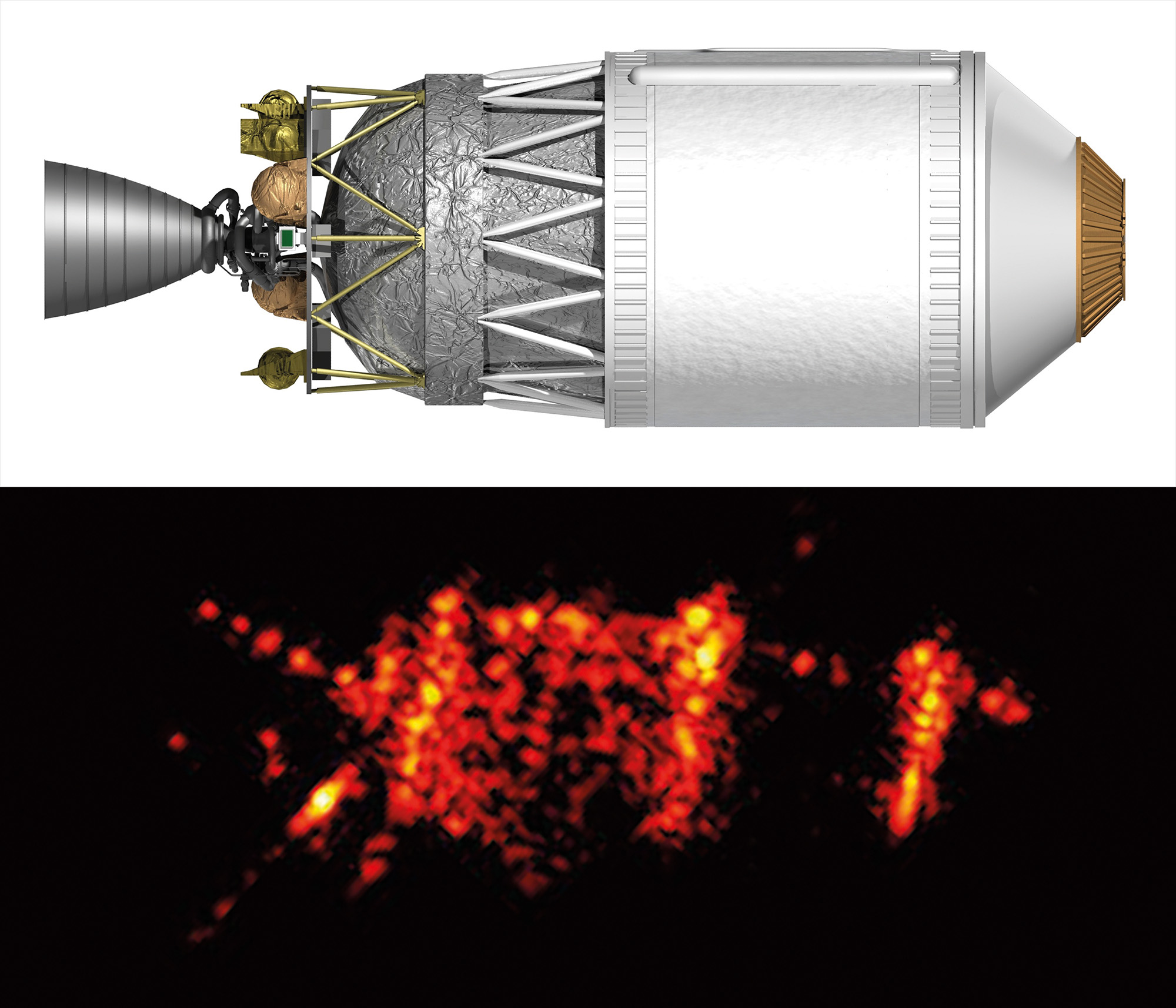Retrieving space debris: The space observation radar TIRA can provide support
Increasingly more debris is flying around in space – a serious threat to satellites and space missions. Space agencies are therefore increasing their efforts to reduce space debris. Fraunhofer FHR's space observation radar TIRA, which is unique in all of Europe, can provide meaningful support: For instance, delivering data about how and at which speed the objects are rotating and whether they are still intact.
Numerous satellites travel along their orbits in space, supplying us with information – whether for navigation, communication, TV, or Earth observation. But it is not only active satellites that are flying around there: The majority of all objects in near-Earth space are already past their service life and with and with a tendency to increase in number, since after all, new debris is being added with each rocket launch. This is especially problematic for rocket stages. Their tanks frequently still contain some fuel, which time and again leads to explosions. Such an explosion triggers a cascade effect: Instead of a larger piece, a number of smaller fragments are now floating around in the near-Earth space – increasing the probability of a satellite being hit and damaged or even destroyed by such an object. Because even these small objects represent a danger: Satellite failures occur time and again, for example because fragments have perforated the solar panels.
Even though near-Earth space is large, satellites do orbit Earth on specific paths and the capacities of some of these paths are already exhausted today. Space agencies are therefore undertaking first attempts to retrieve space debris. ESA, for instance, is planning its first test mission for 2025; it will involve retrieving an adapter that once coupled a rocket upper stage and its payload. The aim, both during the preparations as well as during the mission, is to obtain as much information about an object as possible: How fast is it rotating? In which direction? What is its orientation in space? What is its condition?
The Space Observation Radar TIRA: Tracking and Imaging Rocket Stages
With its space observation radar TIRA, short for Tracking and Imaging Radar, Fraunhofer FHR is able to deliver the data necessary for these missions and support both their planning and execution. With its capacity to observe objects in space, TIRA is unique in Europe – the system is capable of detecting objects the size of only two centimeters from a distance of a thousand kilometers. Fraunhofer is already providing mission support services with TIRA today. On a national level for the German Space Situational Awareness Center in Uedem and on an international level for ESA, for example. One of the tasks Fraunhofer FHR was commissioned with in 2019 involved the damage analysis for an upper stage of a Japanese rocket. In order for the necessary image to be as precise as possible, the rocket stage's rotation speed must be known as accurately as possible. So it has to be determined exactly how fast it is rotating and in which direction(s). Since it can rotate around several axes at the same time, the motion can be very complex. TIRA typically observes the object during its passage for eight to twelve minutes from different angles. At Fraunhofer FHR, algorithms developed in-house are used to analyze a sequence of radar images and to then estimate the rotation speed on this basis. In the process, a 3D model matching the object's dimensions is created based on the radar images. This 3D model is then aligned using a sequence of radar images. If the motion of the 3D model match those of the object in the image sequence, the speeds were chosen correctly. If not, readjustments must be made in an iterative process.
Outlook
Space debris will continue to increase – which will also increase the risk of active satellites being damaged by fragments. A precise picture of the situation as well as retrieving and preventing space debris will be relevant topics in the future. With TIRA, Fraunhofer FHR is in a position to provide support in all three areas. For instance, damage analyses that allow for assessments concerning the fragmentation of an object contribute to the picture of the situation, while condition and rotation analyses of objects can help with the retrieval by answering the question as to which method is best suited for the mission: a net or a gripper? As far as prevention is concerned, the activation of a braking sail can be verified.
